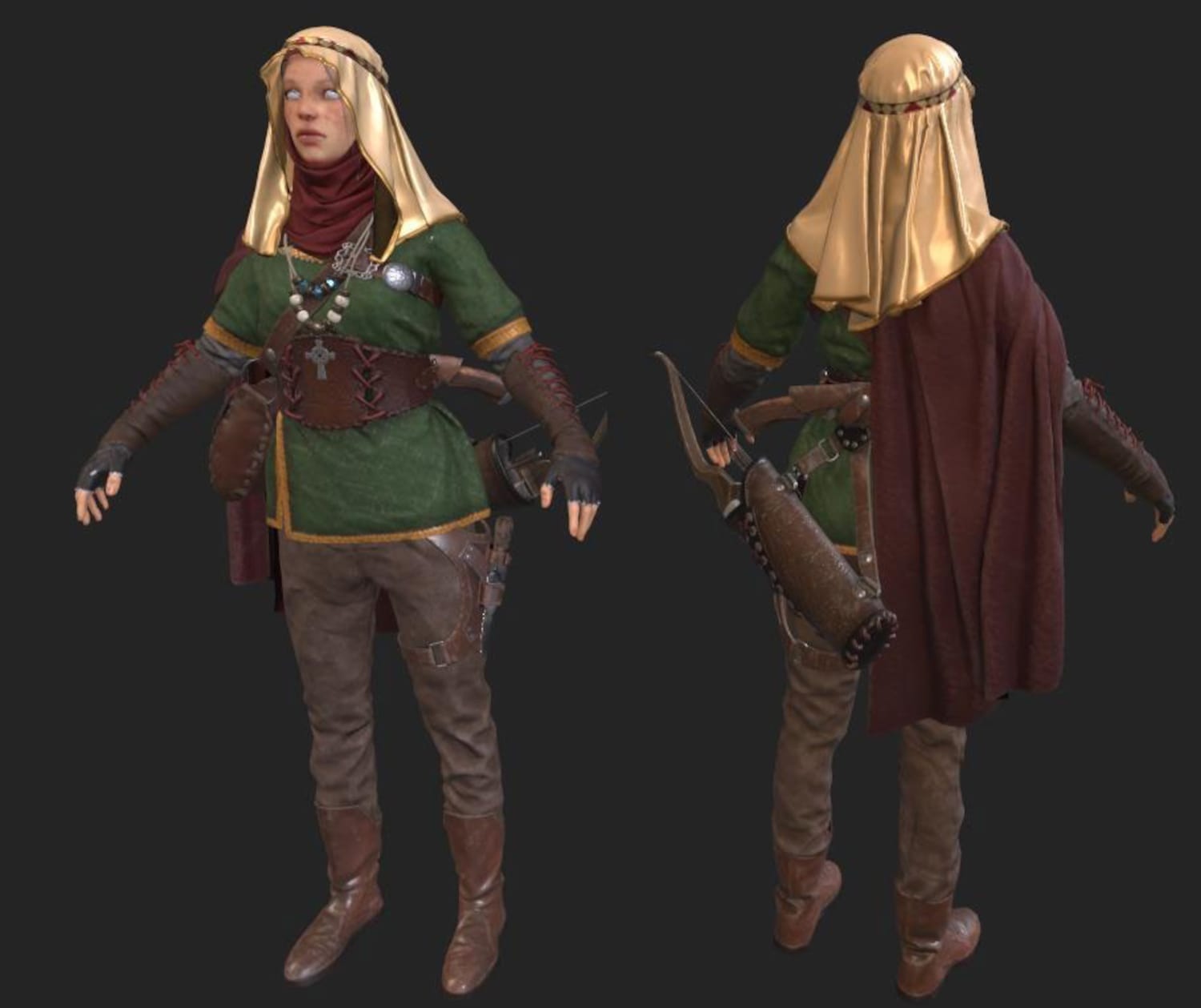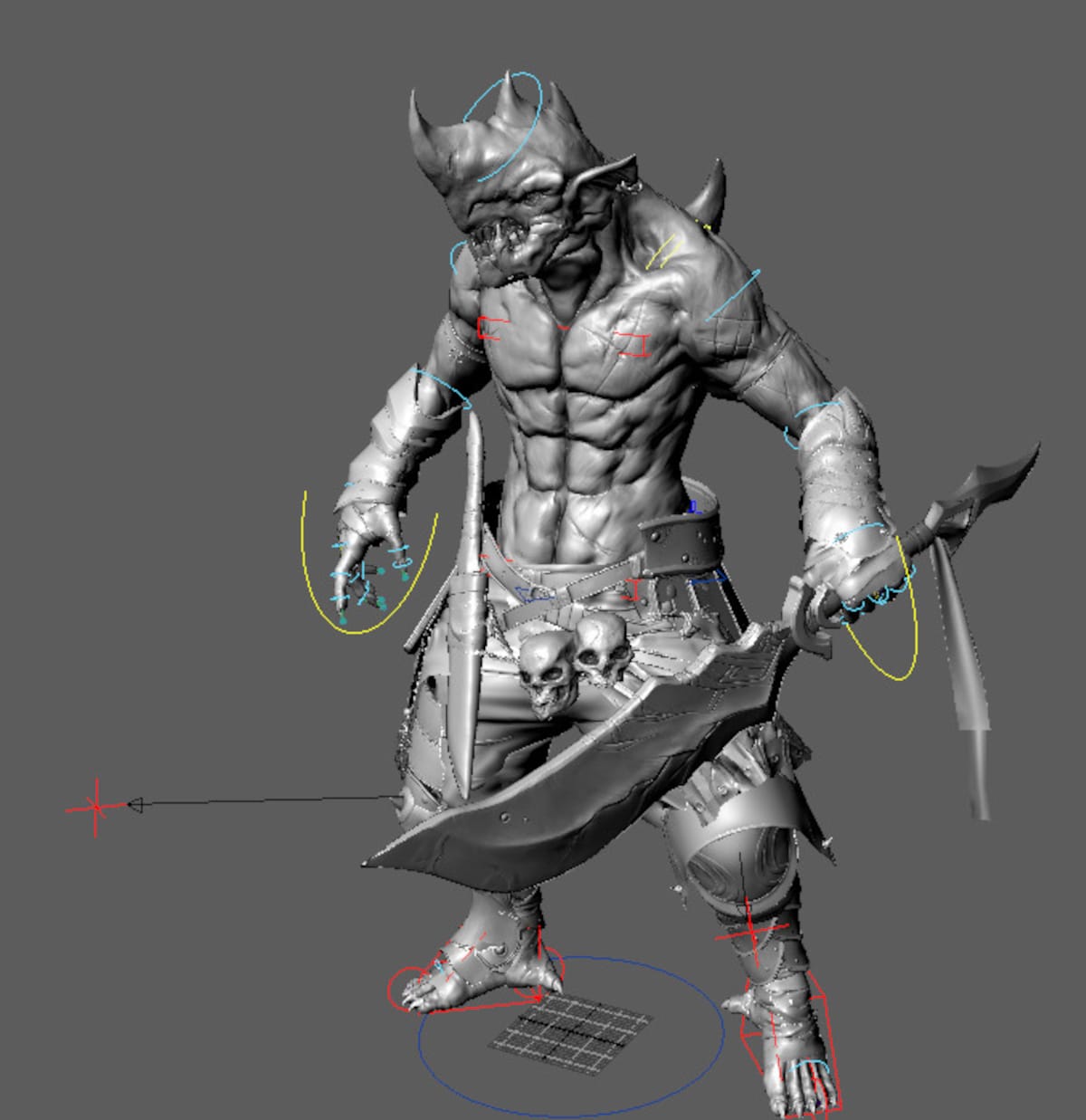ARE LOCAL GRADUATES FROM GAME-RELATED STUDIES PRIMED TO PERFORM ON THE JOB?
 First, Aiman ideates by studying 2D conceptual drawings and reference images. Photo by: Muhammad Aiman Zubir
First, Aiman ideates by studying 2D conceptual drawings and reference images. Photo by: Muhammad Aiman ZubirTHE INCLINATION TO fixate on the learning of theories and concepts, instead of practical application, has been described as the loose cog in Malaysia’s otherwise burgeoning local gaming industry. When Muhammad Aiman Zubir enrolled in the New Media Design & Technology programme at Universiti Sains Malaysia (USM), he gleaned a general understanding of the creative industries through subjects such as animation, video editing and graphic design. “But technical training in hardware and software applications was not covered much.” A gamer himself, Aiman became intrigued by the game designs of VR (virtual reality), which led to his learning more about them from online research.
On graduating, Aiman moved to the U.S. to pursue a Master of Fine Arts in Interactive Design and Game Development at the Savannah College of Arts and Design, where he became delightfully acquainted with more skills and knowledge in the 3D arts for game development.
“We acquired hands-on knowledge on technical applications from veterans of the gaming industry,” he says, adding that the course’s curriculum is structured on the advice of professional practitioners. “Each year, the college invites creative industry players such as Disney Pixar and game developers to conduct talks and to scout out talents for job opportunities. Those with impressive portfolios even managed to secure employment before graduation!”
Locally, though students at USM are introduced to the foundations of game development, e.g. programming and software applications such as Unity, “we lean more towards teaching them about game design, e.g. 3D modelling, 3D animation, User Experience (UX) design, User Interface (UI) design, etc," says Dr. Norfarizah Mohd Bakhir from the School of the Arts (SOTA) of which the New Media Design & Technology Department is under. But with increasing interest in game design, SOTA is now looking to restructure its overall programme. “Hopefully, this can be done by 2023,” she adds.
At Equator College’s School of Art, Media & Design Technology, diploma students in 3D digital animation learn the fundamentals of 2D and 3D animation, storyboarding, conceptual design, special effects and applying the use of the software Autodesk Maya to create 3D modelling and animation.
Lim Hui Chyi, formerly a student and now a lecturer of the same programme, says, “Our graduates are trained to acquire the knowledge and skills necessary for the creation of 3D assets needed for the games, and to find future employment as 3D modellers or 3D animators, both of which are equally important and sought after by local gaming companies such as Lemon Sky Studios. The theories and practical skills graduates acquire from their tertiary education will be augmented with on-the-job training to fully understand the actual game development processes.”
Lecturer Lim Chun Woei, who also teaches multimedia design-related courses at Equator College and games design media at Saito University College, observes a persistent problem in students unwittingly trapping themselves within the proverbial box. “As gamers themselves, students tend to design games based on what they have played or been exposed to. Shortcuts are taken, but little effort is made to understand the basics of game design, i.e. its history, theories and principles. Without them, how is one to know how and why something is developed or changed? Let alone be tempted to break the rules with creativity and innovation?” he asks.
Creative Processes in Game Development
On completing his Master’s, Aiman was recruited as a character artist for the American video game company, Electronic Arts Inc. (EA). He was responsible for creating 3D characters for the company’s sports titles. “Different game genres target different player groups; this decides the content or storyboard for the game design, which includes elements like design flow mapping, prototype creation and polishing the works.”
“Once the storyline is finalised, we move into the stages of pre-production and production; at the latter stage, tasks are assigned to artists, who focus on the visual presentation of the game's characters and scenes; to designers, in combining the interactive components of UX and UI to maximise the gaming experience; and to programmers, who write the codes and develop the software to bring the video game to life. EA’s a big studio with different departments; each of us are assigned to manage a specific part of the design process. What I did was to create 3D characters based on the artist’s conceptual drawings of the characters.”
 Concept sculpting. Then, he creates in detail the digital sculptures of the character to be approved by the art director. Photo by: Muhammad Aiman Zubir.
Concept sculpting. Then, he creates in detail the digital sculptures of the character to be approved by the art director. Photo by: Muhammad Aiman Zubir.
 Next, he proceeds with the technical processes, starting with re-topology to optimise the digital sculpture by creating a 3D polygon model for it to be accessible on targeted platforms, e.g. iOS, Android, PC and PS4. Photo by: Muhammad Aiman Zubir.
Next, he proceeds with the technical processes, starting with re-topology to optimise the digital sculpture by creating a 3D polygon model for it to be accessible on targeted platforms, e.g. iOS, Android, PC and PS4. Photo by: Muhammad Aiman Zubir.
 Later, Aiman creates the surface texture of the 3D model, including its colour, metallic and skin surfaces, etc. Photo by: Muhammad Aiman Zubir.
Later, Aiman creates the surface texture of the 3D model, including its colour, metallic and skin surfaces, etc. Photo by: Muhammad Aiman Zubir.
 He then conducts rigging, a process of creating the bone structure of a 3D model. This is often a collaborative process between technical artists and riggers. Photo by: Muhammad Aiman Zubir.
He then conducts rigging, a process of creating the bone structure of a 3D model. This is often a collaborative process between technical artists and riggers. Photo by: Muhammad Aiman Zubir.
 The 3D character is finalised in the game engine. With the art director’s approval, the creation will be sent to the animator for animation, and to the programmer to programme the animation. Photo by: Muhammad Aiman Zubir.
The 3D character is finalised in the game engine. With the art director’s approval, the creation will be sent to the animator for animation, and to the programmer to programme the animation. Photo by: Muhammad Aiman Zubir.
Aiman, Hui Chyi and Chun Woei are of the view that despite the growing potential of Malaysia’s gaming industry, parents remain sceptical of their children’s choice of tertiary studies in art and design, and the uncertainty of future career prospects in these fields.
“The video game market in Malaysia is still small, but it is nevertheless growing. We need more industry professionals to advise and guide its development and assimilation into our tertiary education structure, perhaps in increasing order of focus. Firstly, in learning the fundamentals of design and sharpening one’s skill in drawing and sense for colours, as well as the basics of lighting, camera functions and animation. Secondly, in understanding the technical know-how in using supporting technologies; and finally, in mastering software programming which will certainly be useful," Aiman adds.
According to Dr. Norfarizah and Jason Chuah (Head of the School of Art, Media & Design Technology, Equator College), both institutions regularly invite industry experts and practitioners to conducts talks in order to widen students’ knowledge of the industrial practices and market trends. Jason adds, “Before the pandemic, we used to organise annual field trips for our students to Japan to visit established design studios.”
-Source from Penangmonthly.com Online
- Created on .
- Hits: 805
